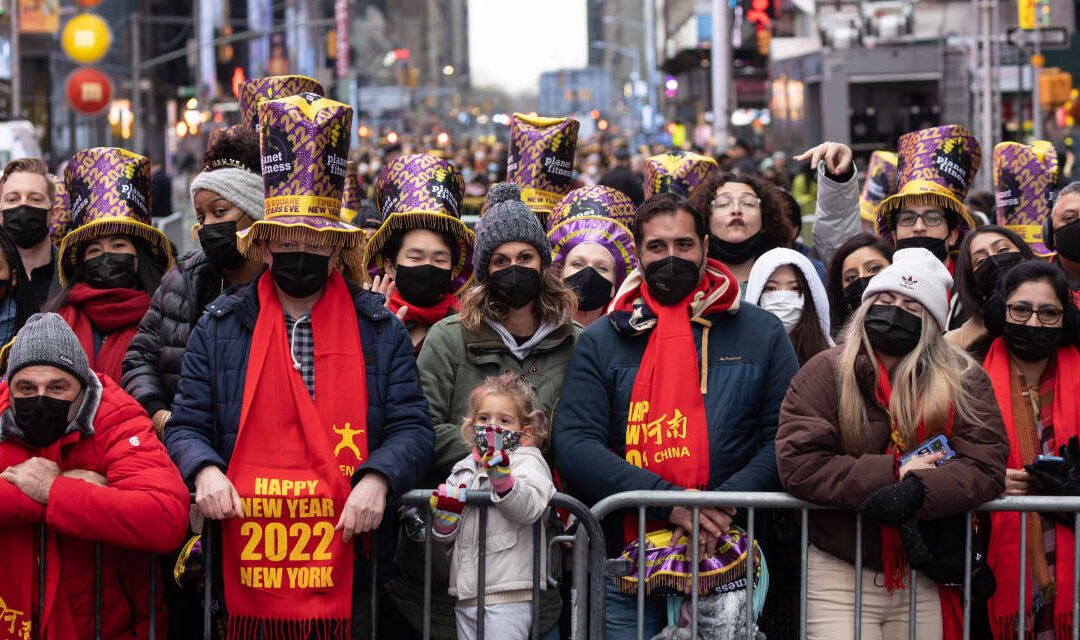Come New Year’s Eve, tens of thousands of people will cram into New York City’s Times Square to watch the ballyhooed ball drop and mark the start of 2024. For many in the crowd, it will be an item on their bucket list — that is, something they’ve convinced themselves they have to do before they kick the bucket.
Well, I’m here to tell them they’re wasting their time and, even worse, their money, if they’re traveling to the Big Apple just for the occasion.
It’s not that the whole Times Square thing is so absurd, though you can’t get much more ridiculous than waiting in the freezing cold for hours corralled in a pen (er, viewing station), with no bathroom facilities available, all for the privilege of seeing what’s basically a lit-up piece of pricey glass descend for a mere 60 seconds.
It’s more that I’m coming to see the whole notion of a bucket list as a foolish — and financially irresponsible — idea.
It wasn’t so long ago we didn’t worry about what we needed to see or do before we died. For much of mankind’s history, mere day-to-day survival has been the real priority — and lest we forget, it still is for a good part of the planet’s population. Having to complete a bucket list is perhaps the ultimate first-world problem.
So, what changed? It’s hard to say, but some observers point to the adventurer John Goddard (1925-1913) and his “life list” of goals as an early example of this concept in the culture. By 1999, the term “bucket list” was coined by screenwriter Justin Zackham, a condensed version of his original phrase: “Justin’s list of things to do before he kicks the bucket.” And by 2007, “The Bucket List,” a movie starring Jack Nicholson and Morgan Freeman about two terminally ill men and their quest to live life to its fullest during their final days, was released. Naturally, Zackham wrote the screenplay.
“Having to complete a bucket list is perhaps the ultimate first-world problem. ”
It’s been suggested that what’s driven this bucket-list fascination in recent years is plain ol’ consumerism, as in we want to buy our way to a life of great accomplishments. And there’s a whole industry — or actually, several industries, when you consider what a bucket list might encompass — ready to accommodate us. One British financial site has even come up with a bucket-list “calculator” to tally the cost of fulfilling all your fantasies.
Little wonder psychotherapist Philippa Perry once joked that the whole bucket-list thing must have been devised “as a brilliant PR stunt by somebody who was selling swimming with dolphins.”
But here’s the rub: I’ve swam with the dolphins — at no small expense (about $350 in today’s dollars for a 10-minute “experience”). And it was a big letdown. I didn’t feel any of the supposed magical bond between myself and the sea creatures. If anything, I started to think that maybe it wasn’t such a humane way to treat these incredibly intelligent animals (and others are of the same mind).
In other words, we’re setting ourselves up for disappointment with much of this bucket-list folderol. In a piece for the Psychology Today website, Bence Nanay summarized it thusly: “When you do get to stand in front of the Taj Mahal, this moment will never live up to the idealized image that is the goal state of your desire. There are wasps. Taxi drivers keep on bugging you to get them to be your tour guide. You have a headache. You need to pee. And so on.”
And that’s presuming you do make it to the Taj Mahal. Perhaps the real disappointing aspect of the bucket list is that most of us will probably never check off all or even most of the items on it. Does that mean our lives were less than fully lived? Did we really fail ourselves for not seeing the Times Square ball drop in person?
Of course, there’s nothing wrong with having dreams of what you want to do in your lifetime. I’d still like to visit Asia at least once, maybe twice, before I kick the bucket, for example. But a lot of smart folks suggest we plan each trip as its own thing rather than as part of some compulsory list. Do something because you want to, not because you “have” to do it.
Or maybe just treat every day as its own opportunity for adventure. That’s how the writer Richard Boehmcke, who has delved into the oppressive nature of bucket lists, views the world. We want to chase “these big things,” as he described them, but sometimes it’s the small stuff we encounter along the way that counts the most.
“Life is the non-event, man, “ he told me.
Which brings us back to Times Square. And here’s where I have to confess I did once see the ball drop. It was 43 years ago, back when the event had far less hoopla surrounding it. In fact, I hadn’t planned on going, but I happened to see a Broadway show that night with a friend and when we exited the theater, we were naturally in the theater district — aka Times Square.
So we stayed for the big moment, which wasn’t particularly memorable, lest you count our bashful attempts to strike up a conversation with any number of the young women in the crowd. But I do remember that we ended up at my parents’ house later that night, devoured the deli leftovers from their party and laughed ourselves silly as a way to welcome the new year.
That’s indeed the priceless non-event stuff of life. Anything else, including the ball drop on your bucket list, is merely a distraction.









